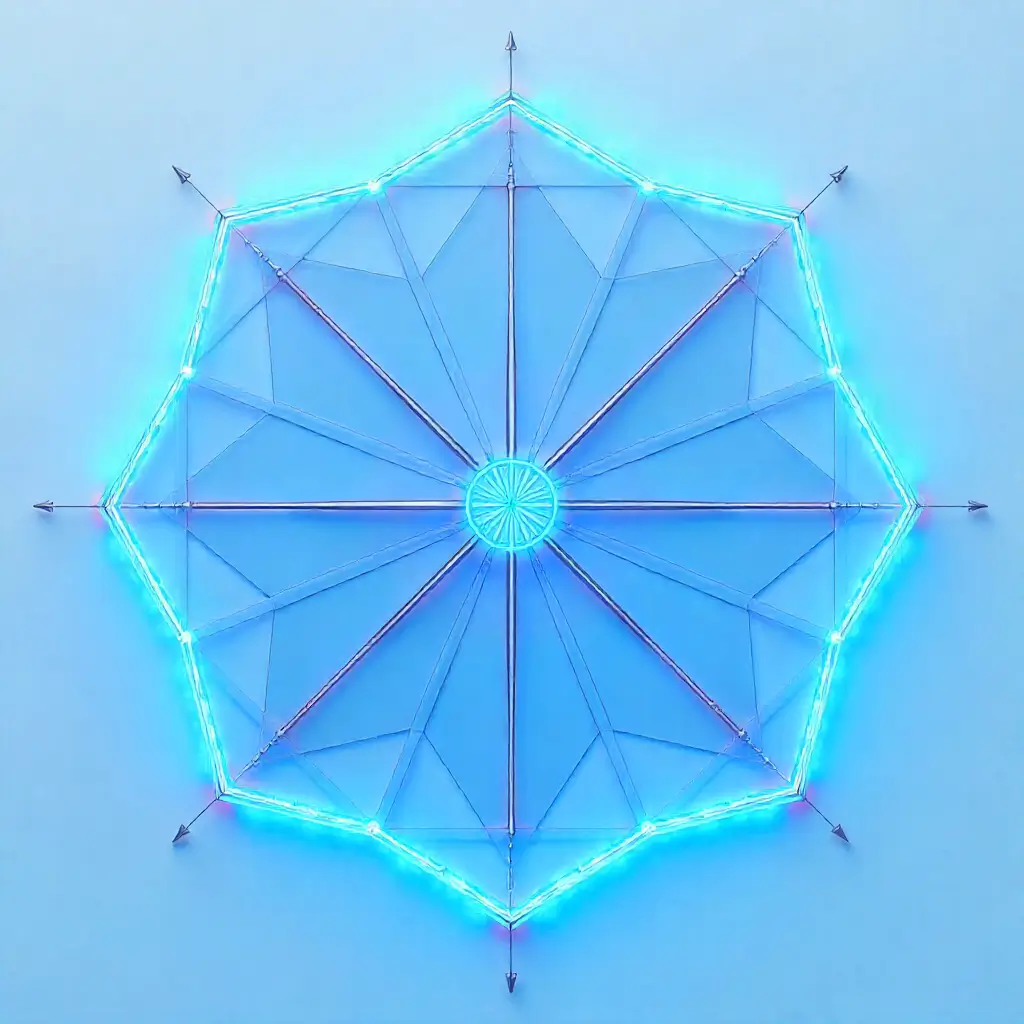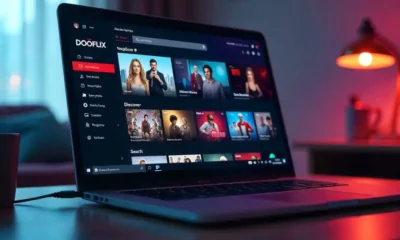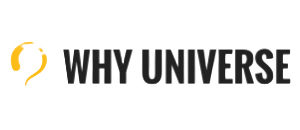EDUCATION
Karen Read Today: Unlocking the Power of Daily Reflection

Karen read today is more than just a phrase—it’s a mindset, a daily ritual that fuels growth, clarity, and self-awareness. Whether you’re looking for inspiration, personal development, or actionable strategies, reflecting on what Karen read today can be the small but mighty shift that transforms your day.
Why “karen read today” Matters
When people search for karen read today, they’re not just looking for what someone named Karen might have read. They’re searching for guidance, insight, or perhaps a signal to reflect on their own learning. This keyword touches on curiosity, emotional engagement, and a desire to improve.
Embracing the Habit of “karen read today”
Starting Your Day with Purpose
Framing your morning around karen read today brings a sense of intention and clarity. It’s a gentle yet powerful reminder to consume meaningful content that aligns with your values or current goals. Whether you read a single quote or a chapter from a self-help book, doing so sets a focused tone for the rest of your day.
Strategies for Effective Daily Reading
-
Select material that resonates with your current season in life
-
Allocate a specific time slot daily to make reading a non-negotiable habit
-
Use sticky notes or journals to quickly log what stood out from what “karen read today”
Benefits of Daily Reflection Modeled by “karen read today”
Enhanced Emotional Intelligence
Reflecting daily sharpens emotional sensitivity and awareness. As you internalize what karen read today, you begin to draw parallels between her learnings and your own life. This mirroring process strengthens empathy and helps manage emotional responses more thoughtfully.
Cognitive Sharpening and Knowledge Expansion
“Karen read today” implies consistent intellectual input. Over time, small pieces of information accumulate into broad understanding. It’s this ongoing exposure to varied content that makes us more adaptable and insightful decision-makers.
Comparison Table: Daily Reflection Methods
| Feature | Informal Snippets | Structured Routine | Guided Journaling | Social Sharing | Tech-Enhanced Tools |
|---|---|---|---|---|---|
| Cost | Free | Low–Moderate | Low | Free | Varies |
| Efficiency | Quick, surface-level | High | Deep, time-intensive | Moderate | High |
| Ease of Use | Very simple | Requires discipline | Easy with habit | Very easy | Easy once configured |
| Scalability | Personal | Very scalable | Scales with structure | Depends on network | Highly scalable |
| Benefits | Motivation only | Mental clarity, growth | Emotional strength | Accountability, connection | Data, analysis, patterns |
How to Integrate “karen read today” into Your Routine
Designating a Reading Nook
Create a cozy, distraction-free space at home. Mentally associate this space with your reading ritual. When you sit down there, let your mind whisper “karen read today”—a cue to shift gears into mindful absorption.
Time-Blocking for Consistency
Consistency beats intensity. Even ten minutes daily is impactful when done intentionally. Use phone reminders or calendar alerts titled “karen read today” to reinforce the habit.
Combining Reading with Reflection
Don’t just read—process. Ask yourself:
-
What insight stood out from what karen read today?
-
How does this relate to your current challenges or aspirations?
-
What one action will you take based on today’s learning?
Leveraging Community and Accountability
When you share your reflections—even casually—your commitment deepens. Text a friend, post on social media, or join a reading group. Mentioning “karen read today” creates a ripple effect, inspiring others to engage in reflective practices too.
Using Apps and Tools
Track your reads with digital tools like Notion, Evernote, or a simple voice recorder. Tag each entry with “karen read today” to quickly revisit key lessons. Apps also let you set daily prompts or streak reminders.
Aligning with “karen read today” Mindset – Expert Insights
Professionals across fields agree: daily input creates exponential output. Psychologists highlight the cognitive and emotional regulation benefits of daily journaling. Career coaches emphasize micro-habits like “karen read today” to drive long-term transformation. And educators recommend reflective reading as a path to deep learning.
Overcoming Barriers to Daily Reflection
Time Constraints
If time is tight, even a single quote or sentence can be powerful. Quality trumps quantity. Let “karen read today” be your minimum viable habit—small, achievable, and repeatable.
Mental Resistance or Overwhelm
Start light. Read something humorous, uplifting, or familiar. The goal isn’t academic rigor; it’s meaningful engagement. When overwhelmed, ask “what would Karen read today to feel better?”
Forgetting to Follow Through
Automate the habit. Add it to your digital to-do list, set a daily alarm, or pair it with another habit like coffee or meditation. Use motivational stickers or wallpapers that say “karen read today” as visual anchors.
Losing Momentum
Track your insights visually—a calendar marked with checkmarks, or a digital journal with color-coded reflections. Seeing what you’ve accomplished reignites consistency.
Measuring the Impact of “karen read today”
Personal Journals and Mood Tracking
Write a sentence about your mood before and after your reading session. Over a few weeks, patterns emerge—especially increased calm, clarity, or creativity.
Goal Achievement
Tie your reading to personal or professional goals. For instance, if career clarity is your aim, read about leadership or job search strategy. Review weekly: what progress was sparked by what “karen read today”?
Social Feedback
When shared publicly, feedback or conversation around your readings can validate your thoughts or challenge you to dig deeper. Others’ reactions often enrich your own insights.
Expanding “karen read today” into Other Areas
-
Productivity: Use ideas from reading to improve workflow
-
Creativity: Let your reflections fuel art, writing, or brainstorming
-
Wellness: Align readings with topics like mindfulness or self-care
The beauty of “karen read today” is that it evolves with you. What you read can shift based on life stages, but the practice remains steady.
Practical Toolkit for Your “karen read today” Routine
-
Pick a lightweight journal or digital app
-
Select your reading material—articles, books, quotes, poetry
-
Dedicate time (10–30 minutes) daily
-
Reflect using 2–3 short questions
-
Write a short summary and action point
-
Tag it “karen read today”
-
Repeat consistently
This process isn’t rigid—it’s yours to shape. But naming it, owning it, and logging it gives it life.
Real-Life Success Narratives
Someone once began logging what “karen read today” in her planner. It started as a self-help habit. Within weeks, she noticed better focus, less anxiety, and even sparked a blog. Another reader used the habit to reconnect with literature after years of burnout—just 15 minutes a day renewed her creative spirit.
Tiny actions, repeated daily, make monumental shifts.
Enhancing “karen read today” for Different Goals
Learning New Skills
Reading technical manuals? Skim, highlight, then summarize key learnings. What “karen read today” becomes a log of skill progression.
Improving Emotional Resilience
Pair readings with mindfulness. For example, reflect on a story that moved you. Ask: why did this touch me? This builds emotional literacy.
Boosting Career Clarity
Use daily readings to learn from industry leaders. Summarize and implement strategies, or journal about how insights align with your goals.
“karen read today”—A Simple Yet Profound Ritual
Repeating karen read today daily creates a mindset shift. Over time, it builds a practice of awareness, growth, and alignment. It’s not about checking a box—it’s about connecting to a wiser version of yourself every single day.
FAQs
What does “karen read today” actually mean?
It’s a phrase symbolizing a consistent daily reading and reflection habit. It can also represent a broader idea: pausing to learn something every day.
How often should I practice “karen read today”?
Daily practice is best, even if it’s just a few minutes. The habit compounds in value over time.
Can I apply “karen read today” for different topics?
Yes! It works across personal development, career growth, hobbies, or emotional wellness. The key is intentionality.
What if I miss a day?
That’s okay. A missed day doesn’t erase progress. Just resume the next day with a fresh start.
Do I need to write reflections every time?
Not necessarily, but writing does reinforce clarity and retention. Even a one-line note helps.
How do I track my progress?
Use a physical notebook, a journaling app, or a digital tracker. Tag each entry with “karen read today” and review weekly or monthly.
EDUCATION
N-Gon Definition: What It Is and Why It Matters in Math and 3D Design

Understanding what an n-gon is can make a big difference—whether you’re solving geometry problems or refining a 3D model. In this guide, we break down the n-gon definition, its mathematical significance, and its role in fields like computer graphics and architectural modeling.
Let’s dive in.
What Is an N-Gon?
An n-gon is a geometric shape—specifically, a polygon—with n number of sides. The “n” is a variable that stands for any integer greater than or equal to 3.
- A triangle is a 3-gon.
- A square is a 4-gon.
- A pentagon is a 5-gon.
- …and so on.
So, an n-gon is simply a general term for any polygon with “n” sides.
In mathematics, the term helps describe polygons in a scalable way—without naming each shape individually.
Key Characteristics of an N-Gon
Whether regular (all sides and angles equal) or irregular (uneven sides/angles), all n-gons share some basic properties.
Properties of an N-Gon
- Number of sides: Exactly n sides.
- Number of angles: n internal angles.
- Sum of interior angles: (n−2)×180∘(n – 2) \times 180^\circ
- Can be regular or irregular: Based on side and angle uniformity.
- Convex vs. concave: Determined by internal angle measures.
Mathematical Use of N-Gons
In pure mathematics and geometry education, n-gons serve as tools to teach:
- Angle calculation
- Symmetry principles
- Polygon classification
They’re also foundational in proofs and theorems, such as tessellations and tiling problems.
N-Gons in 3D Modeling and Game Development
In 3D modeling software like Blender, Maya, or 3ds Max, the term “n-gon” has a different context. It refers to any polygon with more than four sides—used in modeling complex surfaces.
Why N-Gons Matter in 3D Graphics
- Easier modeling: Useful during the sculpting phase.
- Potential rendering issues: N-gons may deform poorly when animated.
- Topology concerns: Many engines prefer tris (3-gons) or quads (4-gons) for cleaner results.
Game engines like Unity or Unreal often require meshes to be converted to tris for real-time rendering.
Real-World Applications of N-Gons
Architecture and CAD
Designers use n-gons in structural diagrams and floor plans to represent irregular walls and surfaces.
Data Visualization
N-gons are used in radial charts or custom graph plotting in advanced data interfaces.
Education and Research
Geometry classes often use n-gons to teach concepts of measurement, symmetry, and polygon classification.
Pros and Cons of Using N-Gons
| Pros | Cons |
|---|---|
| Flexible in modeling complex shapes | Can create issues in animation |
| Reduce mesh density for organic forms | Not ideal for real-time rendering |
| Used in mathematical generalization | Harder to control in topology cleanup |
How to Work with N-Gons in Modeling
If you’re a 3D artist, here’s how to handle n-gons safely:
- Use during modeling, but convert to quads/tris before export.
- Clean up topology to avoid artifacts.
- Test animation deformations in rigged models.
Expert Opinions on N-Gons
Dr. Hannah Fry, mathematician and author, says:
“N-gons represent a beautiful simplicity in geometry—providing a formulaic way to understand complexity.”
Jonathan Williamson, Blender Foundation instructor:
“N-gons are great during early modeling stages, but clean quad-based topology is critical for professional-grade output.”
Dr. Michael Bailey, UC Davis Computer Graphics Professor:
“In real-time graphics, n-gons pose risks. Clean meshes with tris or quads are much more GPU-friendly.”
Common Mistakes to Avoid
- Relying on n-gons in game assets
- Ignoring non-planar faces in modeling
- Forgetting to triangulate meshes before export
Final Thoughts
The n-gon might sound like a complex term, but it’s simply a flexible way of referring to any polygon with “n” sides. Whether you’re a math student, digital artist, or engineer, understanding n-gons can streamline your work and reduce errors.
Master the n-gon, and you master a foundation of geometry and modeling.
FAQ’s
What is the difference between a polygon and an n-gon?
A polygon is the general term; an n-gon is a more technical way of saying “a polygon with n sides.”
Are n-gons bad in 3D modeling?
Not inherently, but they can cause problems in animation or real-time rendering if not triangulated properly.
How do you find the sum of interior angles of an n-gon?
Use the formula: (n−2)×180∘(n – 2) \times 180^\circ
Can an n-gon be regular?
Yes, if all its sides and angles are equal, it’s called a regular n-gon.
What’s the smallest possible n-gon?
The triangle (3-gon) is the smallest polygon that forms a closed shape.
EDUCATION
Anna’s Archive: The People’s Open Library in a Digital Age

Anna’s Archive is a free, open-source shadow library that aggregates and mirrors books, academic papers, and digital content from multiple sources—especially those that are often locked behind paywalls. Emerging from the ethos of information freedom and preservation, it became particularly prominent after the legal takedown of Z-Library in late 2022.
It’s not just a pirate website—it’s an ambitious archiving project that aims to preserve humanity’s knowledge for future generations. For students, researchers, and digital seekers frustrated by inaccessible paywalled journals or expensive textbooks, Anna’s Archive serves as a gateway to content that might otherwise be lost or hidden.
Who Uses Anna’s Archive and Why?
Target users of Anna’s Archive include:
- Students and researchers in developing nations or underfunded institutions
- Independent scholars without institutional access to major databases
- Digital librarians and archivists looking to preserve cultural or scientific heritage
- Tech-savvy individuals who value online anonymity and open access
Whether you’re finishing your dissertation or chasing an obscure research topic, Anna’s Archive offers a treasure trove of scholarly, historical, and technical resources.
Key Features of Anna’s Archive
Comprehensive Content Indexing
Anna’s Archive aggregates and mirrors from:
- LibGen (Library Genesis)
- Sci-Hub (for academic journals)
- Z-Library (mirrored collections)
- Internet Archive (metadata and mirror support)
With over 25 million books and growing, it has become one of the most extensive open databases in the world.
Powerful Search Capabilities
Users can:
- Search by title, author, ISBN, or topic
- Access multiple mirror links
- View metadata (formats, file size, tags)
- Choose from PDF, ePub, MOBI, and other formats
Privacy-Centric Design
Anna’s Archive is designed to protect user identity, offering:
- No login requirement
- HTTPS encryption
- .onion access via Tor for anonymous browsing
- An actively updated mirror list in case domains are blocked
“Anonymity is a feature, not a flaw. Information wants to be free, and people deserve access to knowledge regardless of borders or bureaucracy.”
— Anna’s Archive Manifesto
Legal and Ethical Considerations
Anna’s Archive exists in a legal gray zone. While the project claims to preserve and democratize information, many publishers argue it facilitates copyright infringement.
According to Dr. Alexandra Elbakyan, founder of Sci-Hub:
“If knowledge is a human right, then the tools to access that knowledge must be accessible too.”
— Interview with Wired Magazine, 2023
Important: Users must understand the legal implications in their region. Some countries treat access to shadow libraries as illegal, while others are more lenient. Use tools like VPNs and Tor Browser cautiously and ethically.
How to Safely Use Anna’s Archive
If you decide to explore Anna’s Archive, here are some safety tips:
- Always use HTTPS or visit via Tor (.onion) address
- Don’t share personal info on any shadow library platforms
- Use VPNs to obscure your IP
- Avoid downloading executable files or anything suspicious
Anna’s Archive itself doesn’t host malware, but third-party mirrors might.
Why Anna’s Archive Matters in 2025
With rising digital censorship and academic gatekeeping, platforms like Anna’s Archive represent a counterculture movement for open access. They’re not just tools—they’re statements.
“We are in an age where digital preservation is activism. Anna’s Archive is our modern-day Library of Alexandria.”
— Dr. Carla Reyes, Digital Archivist at MIT
Alternatives and Complementary Resources
If you’re seeking legal or open-access platforms, consider:
- Internet Archive (https://archive.org) – Public domain books, historical media
- Directory of Open Access Journals (DOAJ) – Peer-reviewed academic articles
- Open Library (https://openlibrary.org) – Borrow eBooks with a free account
- Project Gutenberg – Free eBooks, mostly classics in public domain
Anna’s Archive is best viewed as a supplement, not a replacement, for legal sources.
Final Thoughts
Anna’s Archive is more than a database—it’s a digital lifeline for millions worldwide. As academia grows more expensive and online information becomes increasingly gated, platforms like Anna’s Archive provide a radical alternative rooted in equity and preservation.
If you’re a privacy-conscious researcher or student navigating limited access, Anna’s Archive might just be the hidden gem you didn’t know you needed.
FAQ’s:
Is Anna’s Archive legal?
It depends on your country. While Anna’s Archive itself does not host content directly, it indexes and mirrors databases that are controversial and often banned.
Is it safe to use?
If accessed via HTTPS or Tor and used responsibly (no personal data, no executable files), it’s relatively safe. A good VPN is also recommended.
What types of content can I find?
- Textbooks
- Academic research
- Fiction and non-fiction
- Technical manuals
- Historical and cultural texts
Can I contribute to the archive?
Yes, through metadata corrections or hosting mirrors. Developers can also contribute to the open-source project via GitHub.
Is it available in multiple languages?
The site supports international searches, though most metadata and titles are in English.
EDUCATION
Understanding n-gon Geometry: A Beginner-Friendly Guide Understanding n-gon Geometry: A Beginner-Friendly Guide

Geometry plays a crucial role in mathematics and real-world problem-solving. One concept that often puzzles students is the idea of the n-gon. Whether you’re preparing for a school exam, building a math project, or just curious about polygons, this guide breaks it down simply and clearly.
What Is an n-gon in Geometry?
An n-gon is a polygon with “n” sides, where “n” is any integer greater than or equal to 3. That means if a shape has 3 sides, it’s a 3-gon (triangle); if it has 8 sides, it’s an 8-gon (octagon), and so on.
Key Characteristics of an n-gon:
- It is a closed shape formed by straight line segments.
- The sides meet at vertices (corners).
- Each interior angle connects two sides.
- “n” can be any whole number ≥ 3.
Examples of Common n-gons:
| n | Name of Polygon | Shape Example |
|---|---|---|
| 3 | Triangle | ▲ |
| 4 | Quadrilateral | ■ |
| 5 | Pentagon | ⬟ |
| 6 | Hexagon | ⬢ |
| 8 | Octagon | ⬣ |
| 10 | Decagon | ⬡ |
How to Classify n-gons
n-gons can be classified based on side length, angle size, and symmetry.
Regular vs. Irregular n-gons
- Regular n-gon: All sides and angles are equal.
- Irregular n-gon: Sides and/or angles are not equal.
Convex vs. Concave n-gons
- Convex n-gon: All interior angles are less than 180°.
- Concave n-gon: At least one interior angle is greater than 180°.
Why Understanding n-gons Matters
Knowing how to identify and work with n-gons is foundational in:
- Geometry problems involving angles, perimeter, and area.
- Computer graphics and modeling (used in game design and animation).
- Architecture and engineering, where precise shapes are essential.
How to Calculate Interior Angles of an n-gon
One of the most useful properties of an n-gon is its interior angles.
Formula:
Sum of interior angles = (n – 2) × 180°
For a regular n-gon:
Each angle = [(n – 2) × 180°] / n
Example:
For a regular pentagon (n = 5):
- Sum = (5 – 2) × 180 = 540°
- Each interior angle = 540 / 5 = 108°
Real-World Applications of n-gons
Learning about n-gons isn’t just for math class. These shapes appear in:
- Architecture: Dome patterns and tile layouts
- Science: Molecular structures and atomic models
- Technology: Computer-aided design (CAD), 3D modeling, and game design
- Art: Mandalas, tessellations, and geometric painting styles
Expert Insights and References
“Polygons, especially regular n-gons, form the building blocks of geometric understanding. Their properties are widely used in both academic and applied settings.”
— Dr. Nancy L. DeVault, Professor of Mathematics, Mathematical Association of America (MAA)
“In computer graphics, regular n-gons are key in mesh generation and surface modeling.”
— Prof. David Mount, Computer Science Department, University of Maryland, CMSC 420 Geometry Lecture Series
“Understanding the sum of interior angles is foundational for students, and it builds essential logical reasoning skills.”
— Khan Academy Geometry Curriculum, Khan Academy
Final Thoughts
The concept of an n-gon might seem simple, but it holds tremendous importance in both math theory and real-life applications. Whether you’re solving geometry problems or designing complex patterns, mastering n-gons gives you a strong foundation in spatial reasoning and logical thinking.
Keep practicing. The more shapes you explore, the more patterns you’ll recognize!
EXPLORE MORE
FAQ,s
What is the minimum value of “n” for an n-gon?
Answer: The smallest polygon has 3 sides, so n = 3 (a triangle).
Can an n-gon have curved sides?
Answer: No, by definition, polygons (and therefore n-gons) must have straight sides.
Is a circle an n-gon?
Answer: A circle is not an n-gon because it has no straight sides or vertices. However, a polygon with a very large “n” (e.g., 1000-gon) can approximate a circle visually.
How do I construct a regular n-gon?
Answer: Use a protractor and compass for precise angle division. In software like GeoGebra or CAD tools, you can generate them with just a few clicks.
What is the use of learning about n-gons?
Answer: Besides exams and tests, understanding n-gons helps with problem-solving in design, engineering, programming, and more.
-

 TECH5 months ago
TECH5 months agoOnionPlay Safe to Use in 2025? | Safer Alternatives, Privacy Tips & VPN Picks
-

 TECH5 months ago
TECH5 months agoDooflix App for PC: Best Ways to Use It on Windows 10/11
-

 TECH5 months ago
TECH5 months agoIs Scrolller Safe? A 2025 Guide to NSFW Browsing with Confidence
-

 BLOG6 months ago
BLOG6 months agoMedihoney: The Natural Healing Power Revolutionizing Wound Care
-

 TECH5 months ago
TECH5 months agoIs F95 Safe? A Complete 2025 Guide for Privacy-Conscious NSFW Gamers
-

 BUSINESS6 months ago
BUSINESS6 months agoBloomberg Billionaires Index: Unveiling the Wealthiest Lives
-

 BUSINESS6 months ago
BUSINESS6 months agoHuns Yellow Pages: The Ultimate Business Directory for Local Searches
-

 HEALTH6 months ago
HEALTH6 months agoDoctiplus: Revolutionizing Healthcare with Smart Digital Solutions
